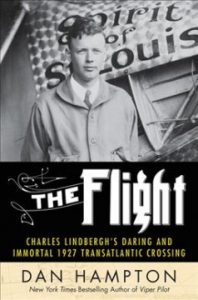And a very happy June, beloved patrons! If the longer days and the promise of some prolonged sunshine in our future isn’t enough to get your celebration sandals on, here are a few more reasons to celebrate in June.

June is Pride Month, and a lot of Libraries around the area are planning some nifty events. Check out the Boston Public Library’s Calendar of Events, in particular, for some great offerings! In addition, the BPL also created its first ever “We Are Pride” booklist for children, teens, and adults, which you can access here.
June 2 is National Doughnut Day, which actually has a historic origin! American women serving with the Salvation Army during the First World War made doughnuts to serve to the troops, and their ingenuity became a symbol, of the Salvation Army’s work on the front lines, as well as a meaningful part of women’s history. So have a doughnut today, and have a read of this article from the Salvation Army.

June 10 is National Ballpoint Pen Day, which commemorates the filing of the patent for the ballpoint pen by brothers Laszlo and Gyorgy Biro. The ballpoint pen transformed who could write, because it made ink and pens so much cheaper, but also how we write. Check out this nifty article from The Atlantic for just how.
June 18 is Father’s Day, an American holiday established by a woman named Grace Golden Clayton after the Monograph Mining Disaster, which killed 361 men and left around 1,000 children fatherless in December 1907. So celebrate the parental figures in your life today (and everyday!)
June 22 is National Onion Rings Day. So go do your patriotic duty and enjoy!
And, because no celebration is complete without a few books, here are some of the new titles that gallivanted onto our shelves this past week–enjoy!

 There Your Heart Lies: Mary Gordon’s newest book is a part historical fiction, and part contemporary coming-of-age–a trend that is becoming super-popular these days. Marian cut herself off from her wealthy, conservative Irish Catholic family when she volunteered during the Spanish Civil War—an experience she has always kept to herself. Now in her nineties, she shares her Rhode Island cottage with her granddaughter Amelia, a young woman of good heart but only a vague notion of life’s purpose. Their daily existence is intertwined with Marian’s secret past: the blow to her youthful idealism when she witnessed the brutalities on both sides of Franco’s war and the romance that left her trapped in Spain in perilous circumstances for nearly a decade. When Marian is diagnosed with cancer, she finally speaks about what happened to her during those years, inspiring Amelia to make a trip of her own. A story of female bonds, of romance, and of the real challenge of defining a life, this is a book for arm-chair adventurers, history buffs, and literary aficionados alike. Kirkus Reviews particularly loved the “Shifting points in time and points of view reveal a young woman shaped by the zealotry that can emanate from family, faith, or war . . . An emotionally and historically rich work with a strong character portrait holding together its disparate parts.”
There Your Heart Lies: Mary Gordon’s newest book is a part historical fiction, and part contemporary coming-of-age–a trend that is becoming super-popular these days. Marian cut herself off from her wealthy, conservative Irish Catholic family when she volunteered during the Spanish Civil War—an experience she has always kept to herself. Now in her nineties, she shares her Rhode Island cottage with her granddaughter Amelia, a young woman of good heart but only a vague notion of life’s purpose. Their daily existence is intertwined with Marian’s secret past: the blow to her youthful idealism when she witnessed the brutalities on both sides of Franco’s war and the romance that left her trapped in Spain in perilous circumstances for nearly a decade. When Marian is diagnosed with cancer, she finally speaks about what happened to her during those years, inspiring Amelia to make a trip of her own. A story of female bonds, of romance, and of the real challenge of defining a life, this is a book for arm-chair adventurers, history buffs, and literary aficionados alike. Kirkus Reviews particularly loved the “Shifting points in time and points of view reveal a young woman shaped by the zealotry that can emanate from family, faith, or war . . . An emotionally and historically rich work with a strong character portrait holding together its disparate parts.”
 D’arc : a novel from the war with no name: I hadn’t actually realized that The War With No Name was a series, but now that I have, I am thrilled that I will have more tales to share with my cat, who thinks these are among the best books we have on offer. In the aftermath of the War With No Name, the queen used a strange technology to uplift the surface animals, turning all the animals in our world into intelligent, highly evolved creatures who must learn to live alongside their sworn enemies—humans. Far removed from this newly emerging civilization, a housecat turned war hero named Mort(e) lives a quiet life with the love he thought he had lost, a dog named Sheba. But before long, the chaos that they escaped comes crashing in around them, bent on resuming the destruction of the war. No longer able to run away, Sheba and Mort(e) rush headlong into the conflict, ready to fight but unprepared for a world that seems hell-bent on tearing them apart. Not quite a fable, and not quite a science fiction book, these create a whole new world that is similar in its emotions, and yet utterly alien, making for a reading experience like no other. Publisher’s Weekly gave this story a starred review, and called it “Fantastic . . . Well-drawn characters and emotional heft are hallmarks of this unusual series about the power of myth, love, and redemption in a dangerous time.” My cat said it was almost better than his nighttime tuna. Almost.
D’arc : a novel from the war with no name: I hadn’t actually realized that The War With No Name was a series, but now that I have, I am thrilled that I will have more tales to share with my cat, who thinks these are among the best books we have on offer. In the aftermath of the War With No Name, the queen used a strange technology to uplift the surface animals, turning all the animals in our world into intelligent, highly evolved creatures who must learn to live alongside their sworn enemies—humans. Far removed from this newly emerging civilization, a housecat turned war hero named Mort(e) lives a quiet life with the love he thought he had lost, a dog named Sheba. But before long, the chaos that they escaped comes crashing in around them, bent on resuming the destruction of the war. No longer able to run away, Sheba and Mort(e) rush headlong into the conflict, ready to fight but unprepared for a world that seems hell-bent on tearing them apart. Not quite a fable, and not quite a science fiction book, these create a whole new world that is similar in its emotions, and yet utterly alien, making for a reading experience like no other. Publisher’s Weekly gave this story a starred review, and called it “Fantastic . . . Well-drawn characters and emotional heft are hallmarks of this unusual series about the power of myth, love, and redemption in a dangerous time.” My cat said it was almost better than his nighttime tuna. Almost.
 The Scribe of Siena: Remember how I said fiction that crossed the past with the present was big right now? Well, Melodie Winawer’s debut falls into that category, but is also a romance, a thriller, and a time-traveling adventure that make it something wholly and wonderfully unique. When neurosurgeon Beatrice Trovato’s life is disrupted by tragedy, she welcomesa trip to the Tuscan city of Siena . There, she discovers intrigue she never imagined—a 700-year-old conspiracy to decimate the city. After uncovering the journal and paintings of Gabriele Accorsi, the fourteenth-century artist at the heart of the plot, Beatrice is suddenly transported to the year 1347 in a Siena menaced by the Plague. Beatrice meets Accorsi, and falls in love—not only with Gabriele, but also with the beauty and cadence of medieval life. As the Plague and the ruthless hands behind its trajectory threaten not only her survival but also Siena’s very existence, Beatrice must decide in which century she belongs. Fans of Outlander, this is a story for you–and for anyone looking to be transported to another world. Publisher’s Weekly gave this one a starred review as well, saying “The vivid descriptions of the people, way of life, food, and other details of medieval Italy deepen the plot, making the book a truly immersive experience…Winawer has created a prodigious, vibrant tale of past and present that transports readers and fills in the historical gaps. This is a marvelous work of research and invention.”
The Scribe of Siena: Remember how I said fiction that crossed the past with the present was big right now? Well, Melodie Winawer’s debut falls into that category, but is also a romance, a thriller, and a time-traveling adventure that make it something wholly and wonderfully unique. When neurosurgeon Beatrice Trovato’s life is disrupted by tragedy, she welcomesa trip to the Tuscan city of Siena . There, she discovers intrigue she never imagined—a 700-year-old conspiracy to decimate the city. After uncovering the journal and paintings of Gabriele Accorsi, the fourteenth-century artist at the heart of the plot, Beatrice is suddenly transported to the year 1347 in a Siena menaced by the Plague. Beatrice meets Accorsi, and falls in love—not only with Gabriele, but also with the beauty and cadence of medieval life. As the Plague and the ruthless hands behind its trajectory threaten not only her survival but also Siena’s very existence, Beatrice must decide in which century she belongs. Fans of Outlander, this is a story for you–and for anyone looking to be transported to another world. Publisher’s Weekly gave this one a starred review as well, saying “The vivid descriptions of the people, way of life, food, and other details of medieval Italy deepen the plot, making the book a truly immersive experience…Winawer has created a prodigious, vibrant tale of past and present that transports readers and fills in the historical gaps. This is a marvelous work of research and invention.”
 Walking to Listen: At age 23, Andrew Forsthoefel had just graduated from Middlebury College and was ready to begin his adult life, but he didn’t know how. So he decided to take a cross-country quest for guidance, one where everyone he met would be his guide. In the year that followed, he faced an Appalachian winter and a Mojave summer. He met beasts inside: fear, loneliness, doubt. But he also encountered incredible kindness from strangers. Thousands shared their stories with him, sometimes confiding their prejudices, too. Often he didn’t know how to respond. How to find unity in diversity? How to stay connected, even as fear works to tear us apart? He listened for answers to these questions, and to the existential questions every human must face, and began to find that the answer might be in listening itself. Few of us have the resources or the time to do what Forsthoefel , but the lessons that he learned during his trek are ones that we can indeed apply to our everyday lives. This work, first and foremost, is one of hope, and that’s something that we can all use a dose of right about now. Booklist agrees, saying “[Forsthoefel’s] openness provides a window into the extraordinary lessons to be learned from ordinary people. This is a memorable and heartfelt exploration of what it takes to hike 4,000 miles across the country and how one young man learned to walk without fear into his future.”
Walking to Listen: At age 23, Andrew Forsthoefel had just graduated from Middlebury College and was ready to begin his adult life, but he didn’t know how. So he decided to take a cross-country quest for guidance, one where everyone he met would be his guide. In the year that followed, he faced an Appalachian winter and a Mojave summer. He met beasts inside: fear, loneliness, doubt. But he also encountered incredible kindness from strangers. Thousands shared their stories with him, sometimes confiding their prejudices, too. Often he didn’t know how to respond. How to find unity in diversity? How to stay connected, even as fear works to tear us apart? He listened for answers to these questions, and to the existential questions every human must face, and began to find that the answer might be in listening itself. Few of us have the resources or the time to do what Forsthoefel , but the lessons that he learned during his trek are ones that we can indeed apply to our everyday lives. This work, first and foremost, is one of hope, and that’s something that we can all use a dose of right about now. Booklist agrees, saying “[Forsthoefel’s] openness provides a window into the extraordinary lessons to be learned from ordinary people. This is a memorable and heartfelt exploration of what it takes to hike 4,000 miles across the country and how one young man learned to walk without fear into his future.”
 The Flight: Dan Hampton: On the rainy morning of May 20, 1927, a little-known American pilot named Charles A. Lindbergh climbed into his single-engine monoplane, the Spirit of St. Louis, and prepared to take off from a small airfield on Long Island, New York. Despite his inexperience—the twenty-five-year-old Lindbergh had never before flown over open water—he was determined to win the $25,000 Orteig Prize promised since 1919 to the first pilot to fly nonstop between New York and Paris, a terrifying adventure that had already claimed six men’s lives. Ahead of him lay a 3,600-mile solo journey across the vast north Atlantic and into the unknown; his survival rested on his skill, courage, and an unassuming little aircraft with no front window. Acclaimed aviation historian Dan Hampton’s The Flight is a long-overdue, flyer’s-eye narrative of Lindbergh’s legendary journey. Using Lindbergh’s own personal diary and writings, as well as family letters and untapped aviation archives, Hampton brings us into the cockpit with Lindbergh, and gives us a pilot-eye view of this remarkable feat of daring. Kirkus Reviews loved the trip, and gave the book a starred review, calling it “Vivid. … Offer[s] a cockpit’s-eye view of the flight. This you-are-there perspective effectively evokes the tension, risk, and skill involved, from the moment Lindbergh takes off from Roosevelt Field, crosses the coast of Newfoundland, and soars alone into the night above the roiling sea.”
The Flight: Dan Hampton: On the rainy morning of May 20, 1927, a little-known American pilot named Charles A. Lindbergh climbed into his single-engine monoplane, the Spirit of St. Louis, and prepared to take off from a small airfield on Long Island, New York. Despite his inexperience—the twenty-five-year-old Lindbergh had never before flown over open water—he was determined to win the $25,000 Orteig Prize promised since 1919 to the first pilot to fly nonstop between New York and Paris, a terrifying adventure that had already claimed six men’s lives. Ahead of him lay a 3,600-mile solo journey across the vast north Atlantic and into the unknown; his survival rested on his skill, courage, and an unassuming little aircraft with no front window. Acclaimed aviation historian Dan Hampton’s The Flight is a long-overdue, flyer’s-eye narrative of Lindbergh’s legendary journey. Using Lindbergh’s own personal diary and writings, as well as family letters and untapped aviation archives, Hampton brings us into the cockpit with Lindbergh, and gives us a pilot-eye view of this remarkable feat of daring. Kirkus Reviews loved the trip, and gave the book a starred review, calling it “Vivid. … Offer[s] a cockpit’s-eye view of the flight. This you-are-there perspective effectively evokes the tension, risk, and skill involved, from the moment Lindbergh takes off from Roosevelt Field, crosses the coast of Newfoundland, and soars alone into the night above the roiling sea.”
Until next week, beloved patrons–happy reading!
